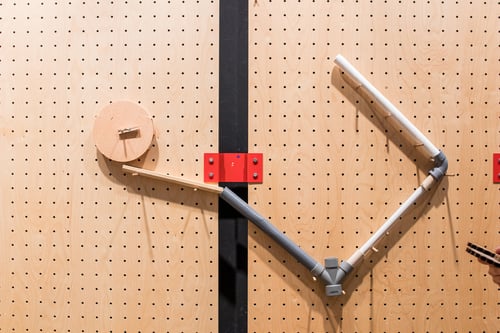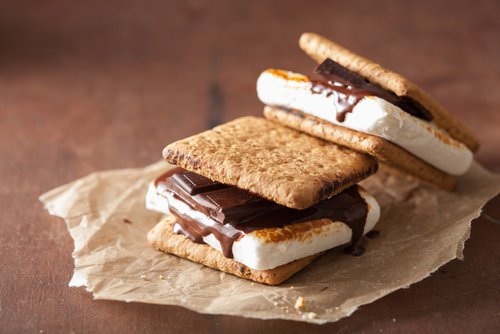Activity
Design Challenge: Making a Parachute
In this design challenge, your child will create a parachute for a small toy using typical household items. Your child can experiment with different materials until they find ones that work best. The goal is to design a parachute that will keep their toy airborne for as long as possible. Therefore, we suggest having your child create a few different prototypes and compare them to see which works best.
We have given step-by-step instructions as guidelines for the design thinking framework. Please feel free to go beyond what we've written out; the point is to be creative! We recommend guiding your child through the process but leaving the creative components up to them.
This activity is aligned to the following NGSS standards: 3-5-ETS1-1, 3-5-ETS1-2, 3-5-ETS1-3.
What You Need:
- Small, lightweight toy (e.g., action figure, miniature doll)
- Stopwatch
- A designated location for testing (e.g., a balcony, a ladder) that is about 8 to 10 feet above the ground
- Typical household items for constructing the parachute (e.g., plastic bags, paper, tissues, fabric, string, yarn, dental floss)
- Tools to construct the parachute (e.g., scissors, tape)
- Pen and paper for taking notes
What You Do:
- First, fully explain the design challenge to your child. Their challenge is to build a parachute for a small toy. Feel free to have your child choose the toy they want to build the parachute for.
- Tell your child that their goal is to design a parachute that will allow their toy to remain in the air for as long as possible when dropped from a height of 8–10 feet. They will test out a variety of materials and see which works best. Tell your child that you will be using a stopwatch to measure how long the parachute stays in the air in order to compare their different designs.
- Before your child starts brainstorming, ask them to define a parachute and its purpose. If they're unsure, feel free to look up images of parachutes online.
- Ask your child, "What are parachutes used for? What do different parachute designs have in common?"
- You can explain to your child that a parachute is a device that is used to slow the speed at which something moves through the air. For example, when people go skydiving, they use a parachute so that they fall slowly and land safely.
- If you and your child look at some pictures of parachutes online, point out that most parachutes are made with light, strong fabrics. (This may help when your child is building their own.)
- After your child has solidified their understanding of this challenge and defined a parachute, show them the materials you're providing them. Don't let them start building yet. Tell your child that they don't necessarily need to use all of the materials you're giving them, and that they can use any other materials they'd like.
- Then, ask your child to begin brainstorming by drawing or writing down several parachute design ideas.
- After your child has finished brainstorming, ask them to choose the design they think will be most effective.
- Now, allow your child to build a prototype (model) of their first design!
- Feel free to assist them as needed, but allow your child to do most of the creative thinking.
- After your child builds their prototype, choose a location about 8 to 10 feet above the ground from where you can test it out.
- For example, you could ask your child to stand carefully on a ladder, or drop the parachute from over a balcony.
- Ask your child to attach their parachute to the toy.
- Assist your child with this part as needed.
- Test your child’s prototype! Take the prototype and stopwatch to the testing location. Explain to your child that their job is to drop the toy while you use the stopwatch to measure how long the toy stays in the air. Have your child write down the time it takes for the toy to fall.
- Ask the following question: "How do you think you could improve your design so that the toy falls even slower and stays in the air even longer?"
- Encourage your child to create several prototypes and compare the results from each.
- Continue guiding your child as they brainstorm, build, and test different prototypes. Be sure to test from the same location each time and write down the times on a piece of paper to refer back to.
- After testing each prototype, ask your child the following questions to help them reflect on the process:
- What worked well?
- What didn't work well?
- How can you improve this design?
- Continue repeating this process until your child has created a parachute to their satisfaction! We suggest going through the process at least two or three times, but feel free to adjust depending on your child's engagement.
Related learning resources













